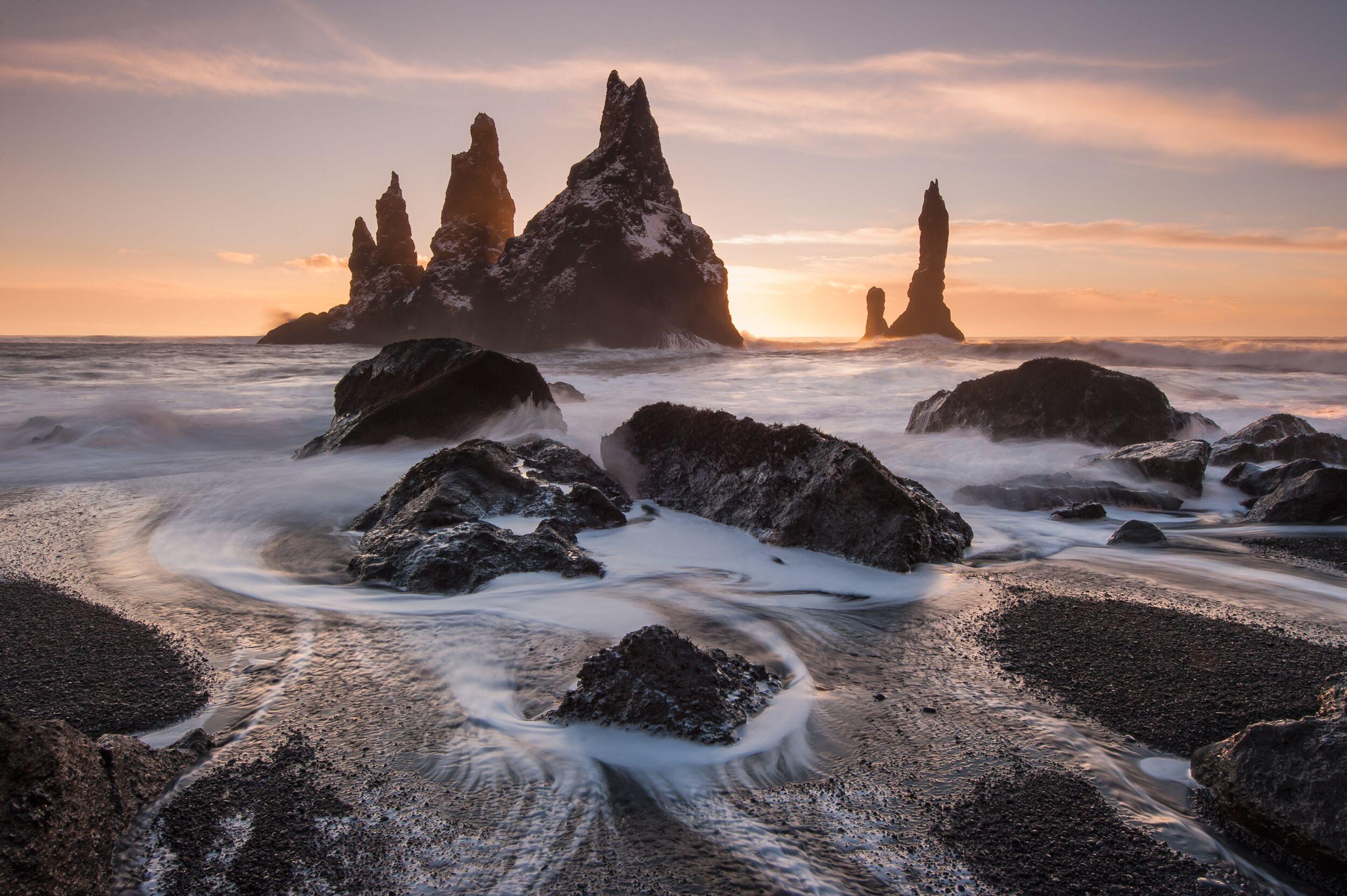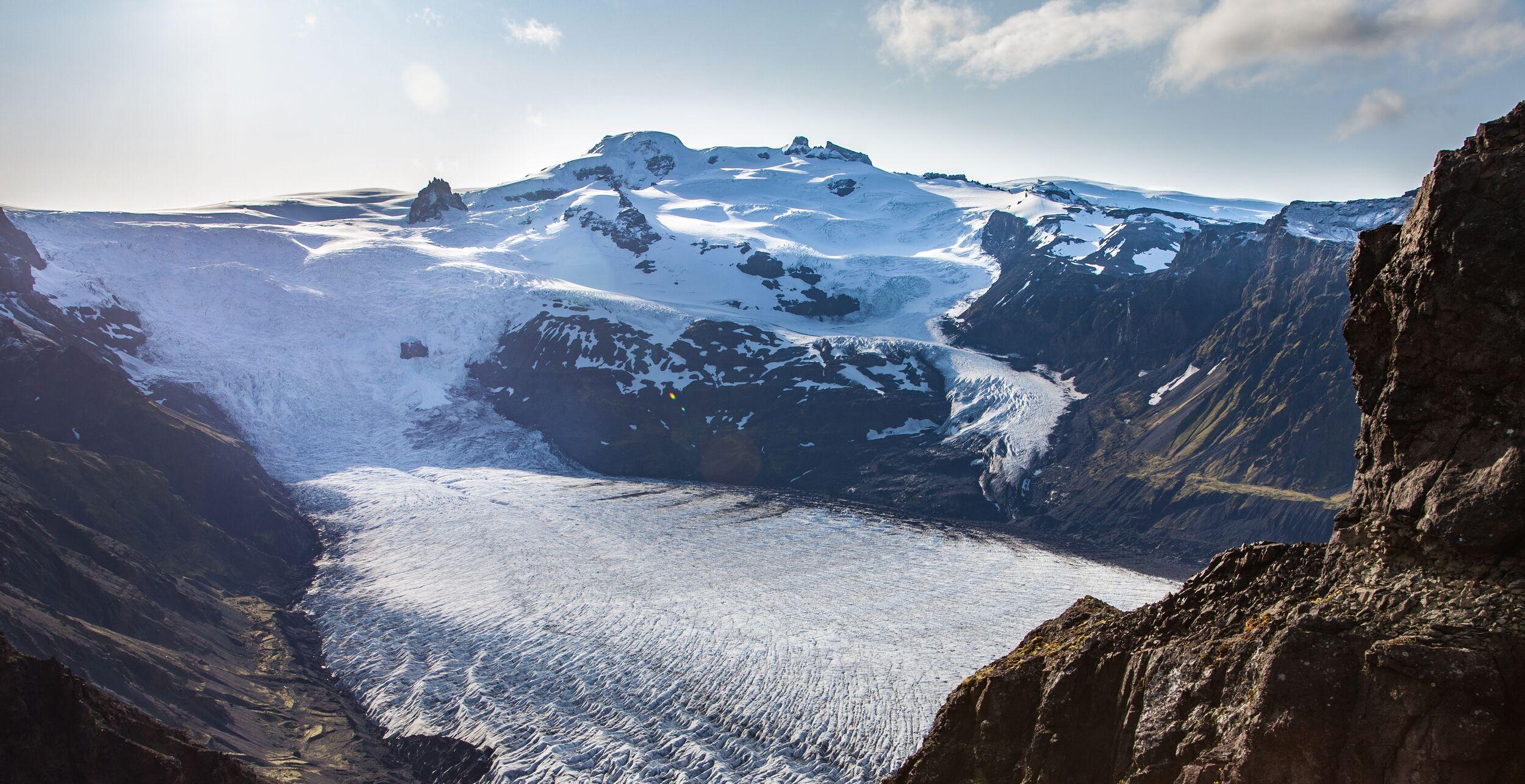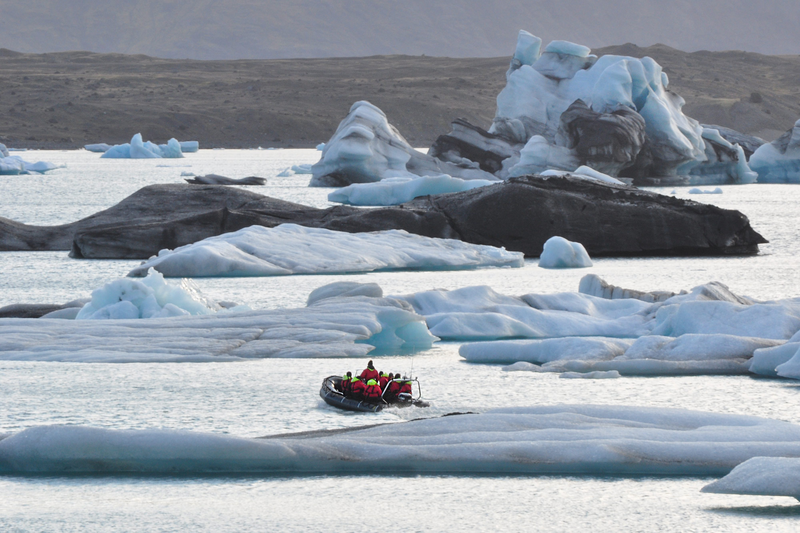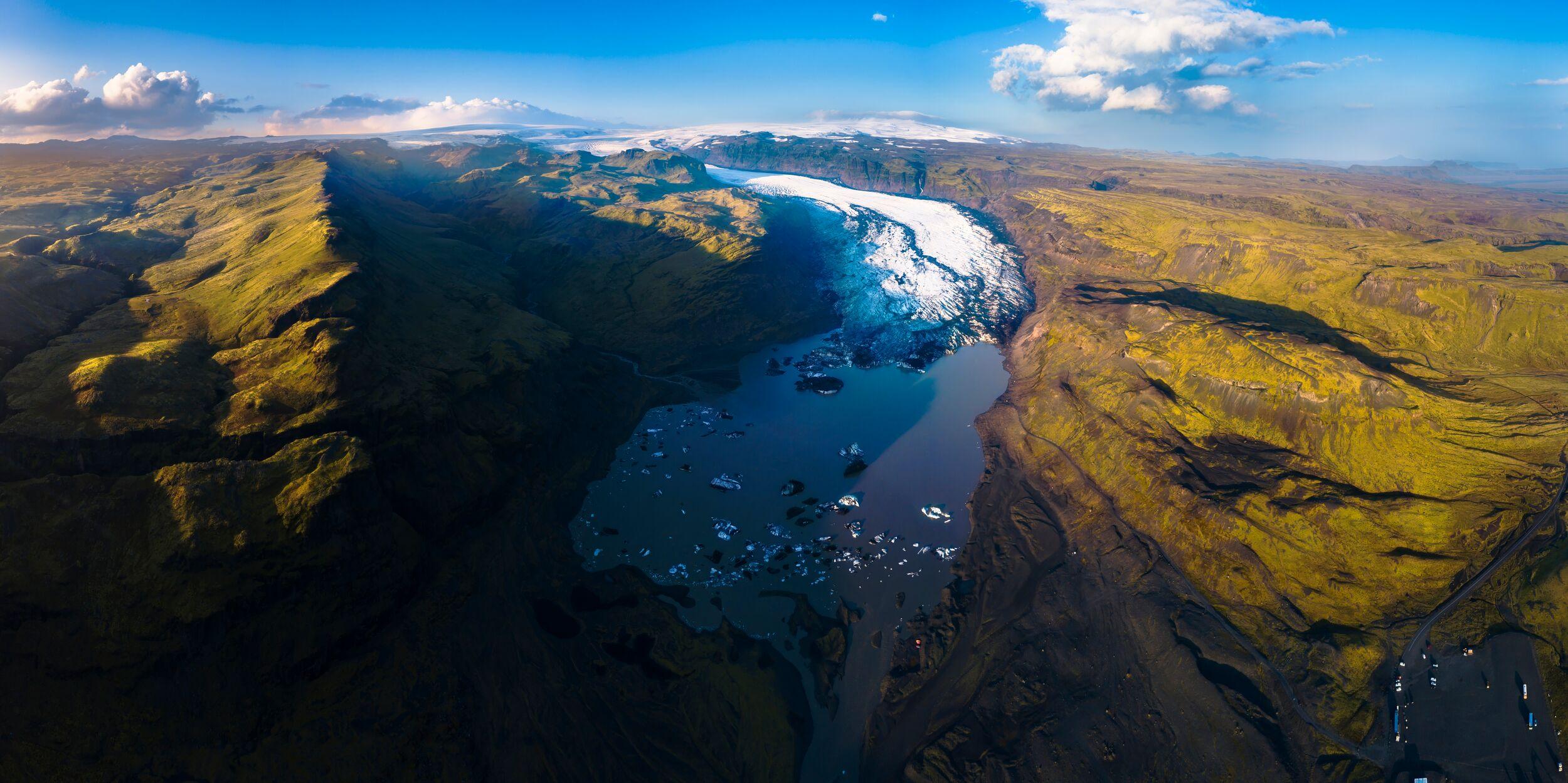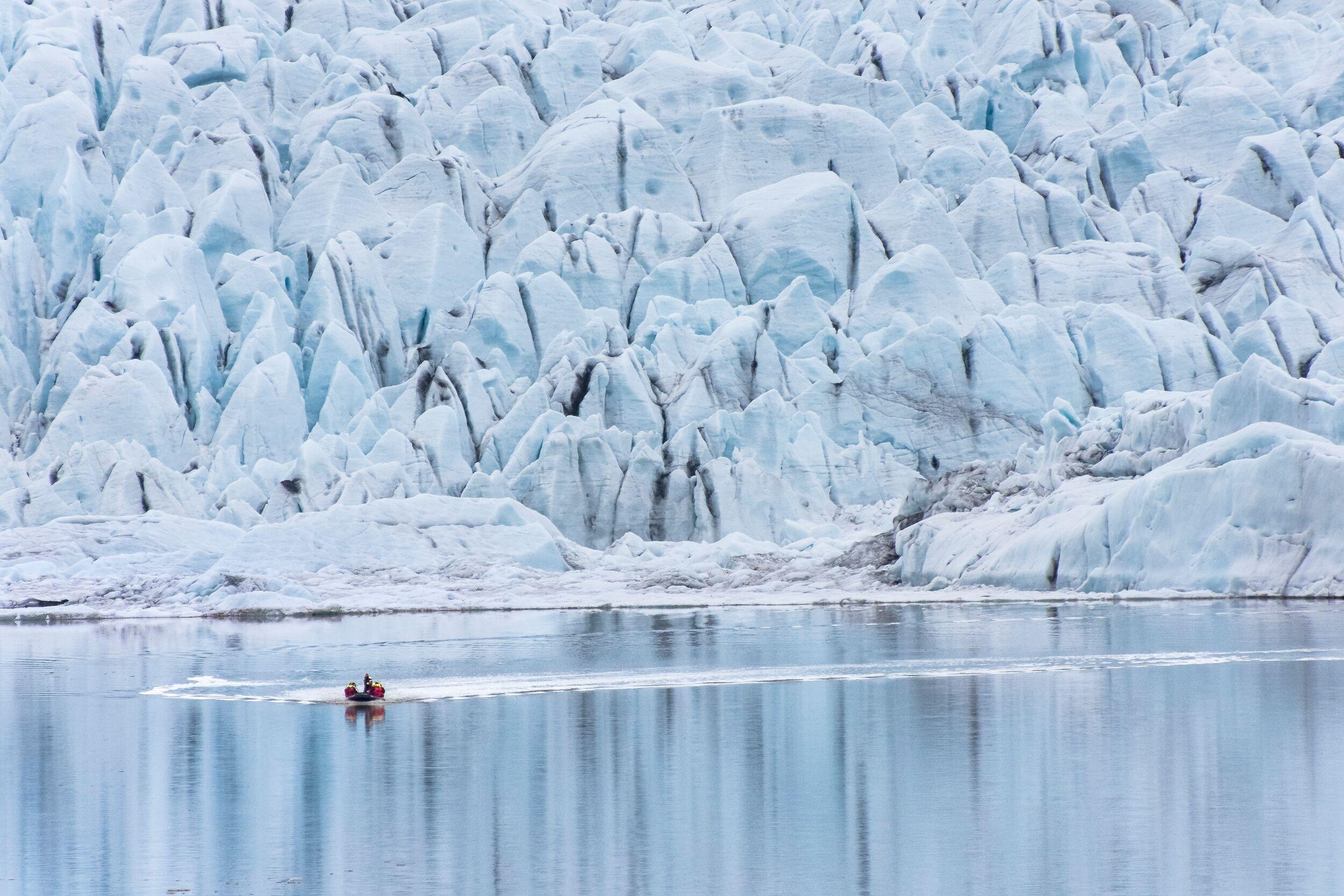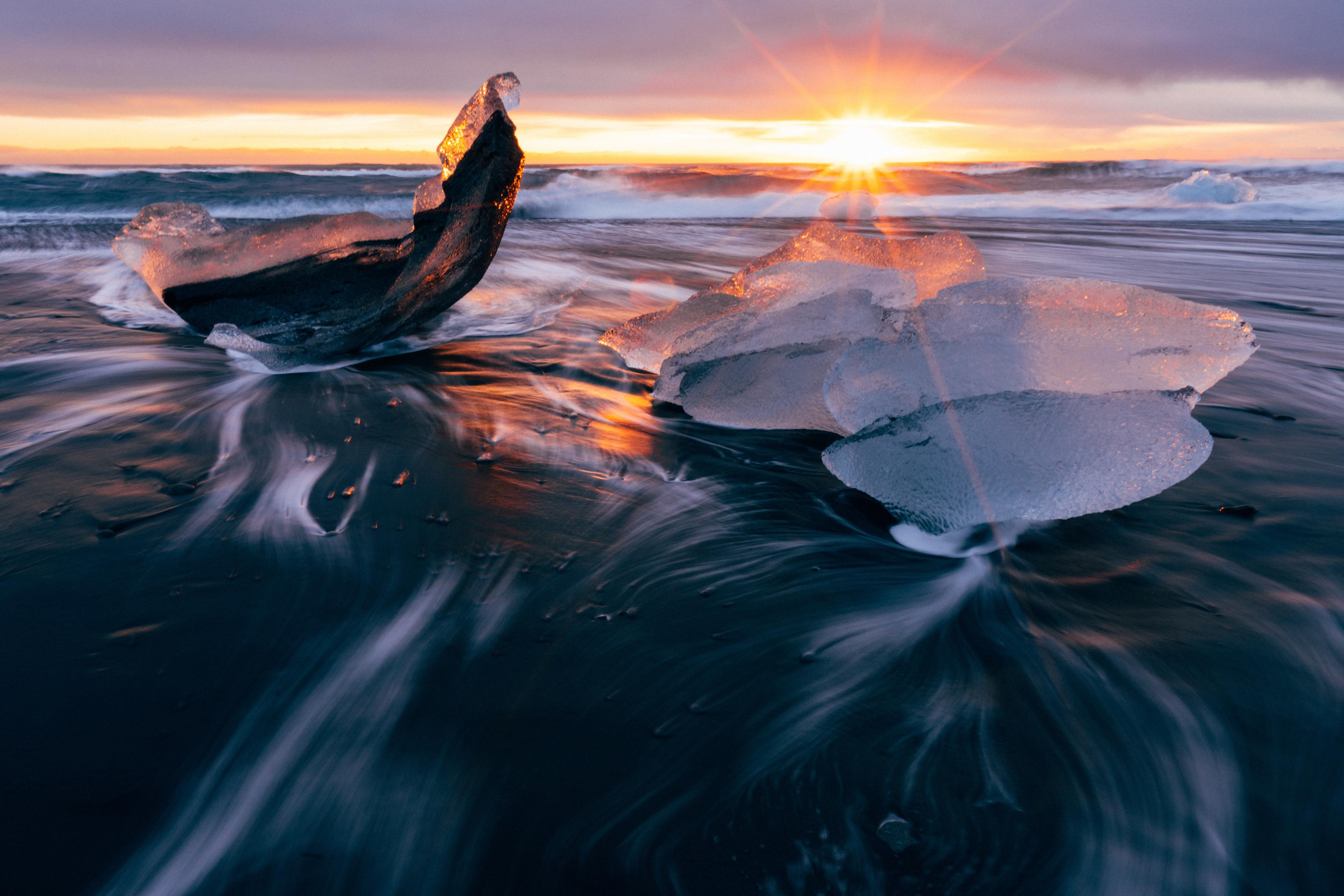
- Best time to visit
- All year round
- Coordinates
- 64.04469, -16.17770
- Distance from Reykjavík
- 377km
Strolling the Sand of the Diamond Beach
The History of the Diamond Beach
The Diamond Beach is a section of the larger Breiðamerkursandur, which is a glacier outwash plain of volcanic sand and shallow rivers. The jet-black sand of the beach was created over millennia, formed by volcanic activity from the nearby volcanic system. During volcanic eruptions, molten lava flowed down from the mountains and met the cold North Atlantic Ocean where it was cooled and solidified into black rock. Often, this sudden cooling causes the lava to shatter into tiny fragments, so it becomes black volcanic sand.
It is known as the Diamond Beach, not because you can find real diamonds here, but because the crystalline orbs of ice across the sand and floating in the shallows of the sea look like scattered diamonds. These chunks of glacial ice are washed down from the nearby Jökulsárlón glacier lagoon and would have started as large icebergs, broken off from the Breiðamerkurjökull glacier – an outlet from Iceland’s largest ice cap, Vatnajökull glacier.
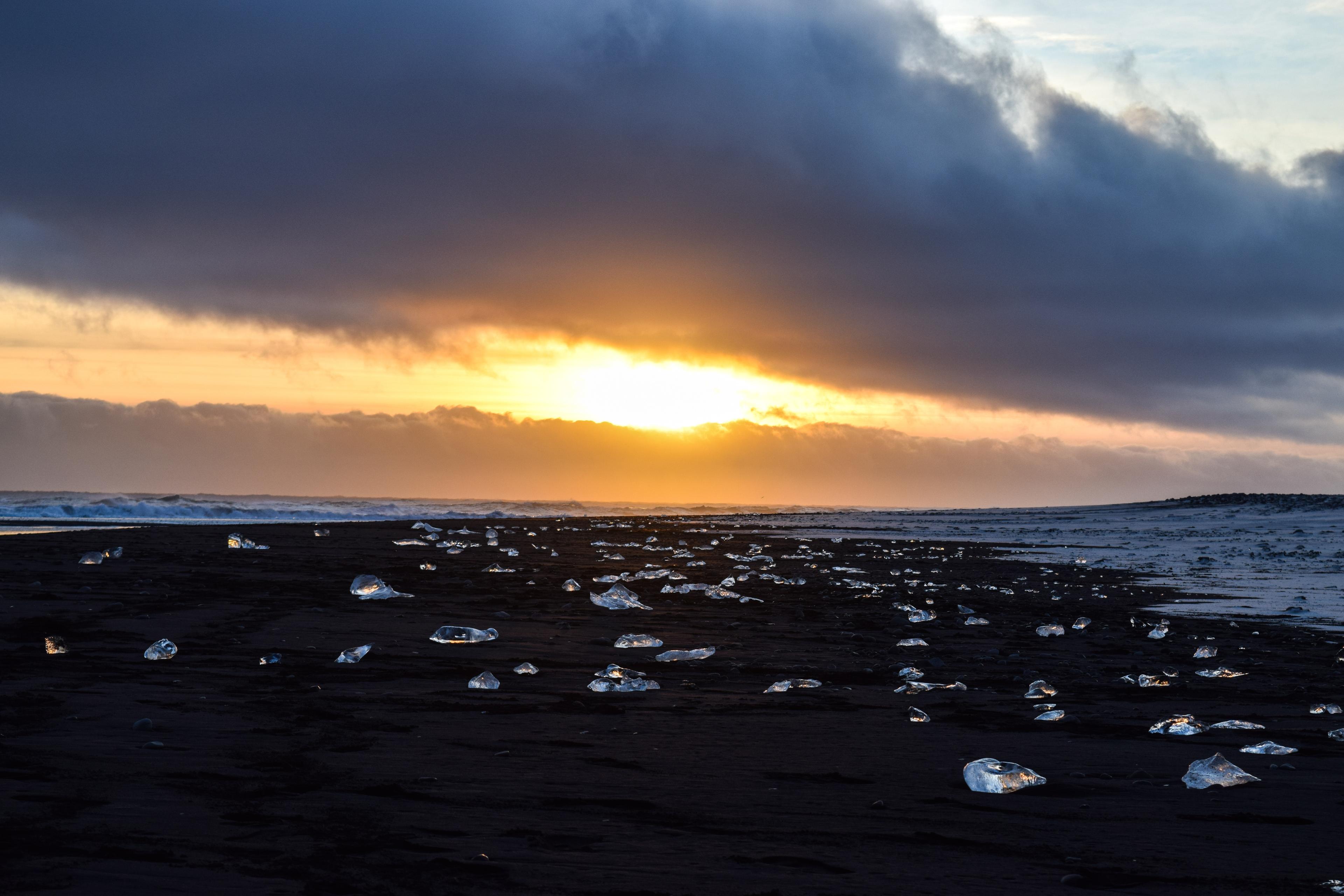
How to Visit Iceland’s Diamond Beach
The Diamond Beach sits on the south shore of Iceland, just off the main Route One ring road that circumnavigates the island. It is just across the road from Jökulsárlón glacier lagoon and travellers often visit both beautiful sights at the same time. From Jökulsárlón’s carpark, it is just a short walk to the Diamond Beach. If you’ve taken a boat tour on Jökulsárlón, it is worth spending a little extra time here to explore the beach too. On arrival, you’ll be met with a captivating sight of sparkling ice scattered across an ebony stretch of sand.
Take time to stroll along the sand and snap some photographs – it’s particularly beautiful at sunrise and sunset when the ice shards seem to glow in the golden light. Keen birders can spot arctic terns and great skua who make their nests here in the protected area. It is a long drive from Reykjavík to the Diamond Beach, taking nearly five hours without stopping. Joining an organised tour to the South Coast and Jökulsárlón takes the hassle out of navigating the way yourself with nothing to do but sit back and enjoy the scenery along the way.
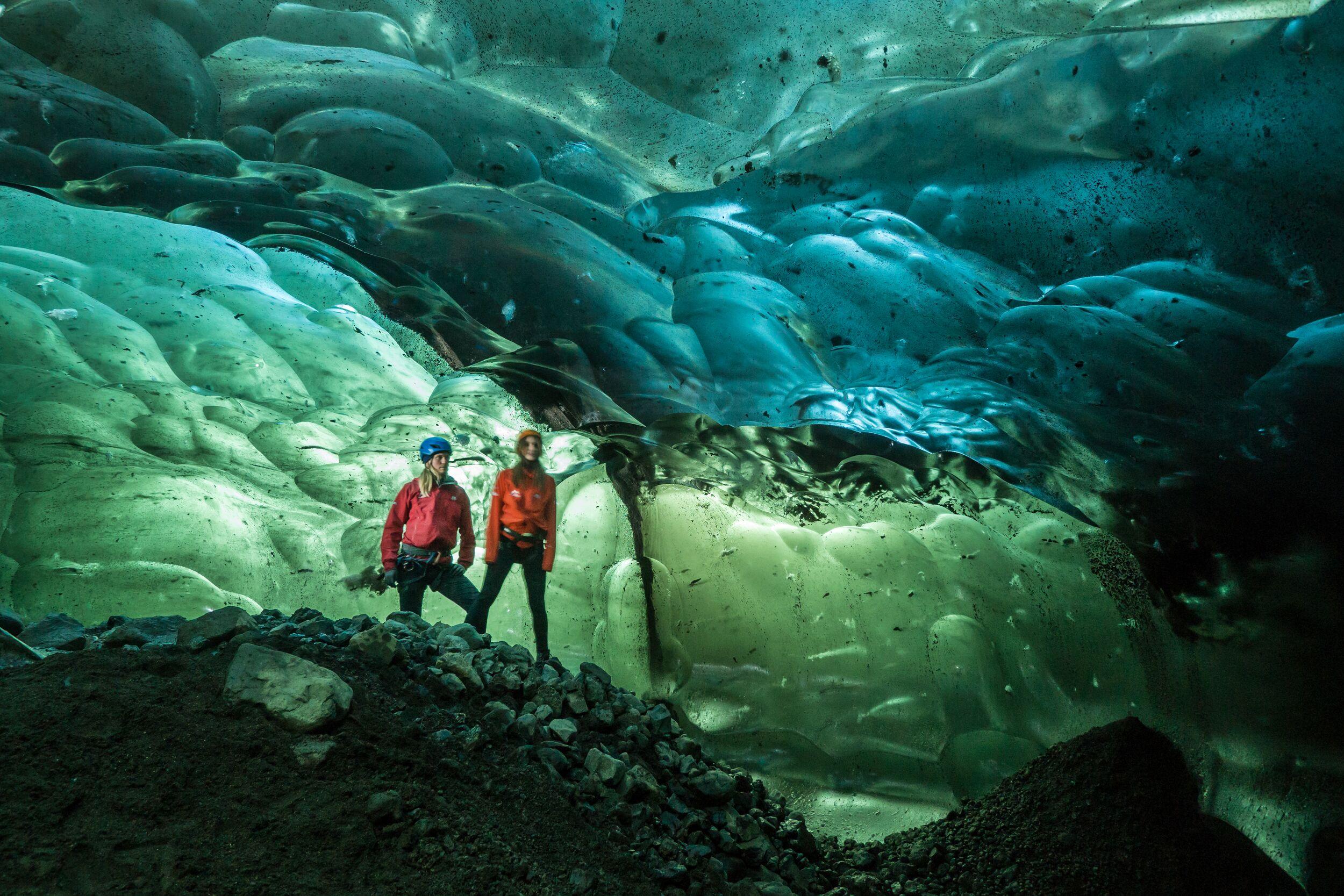
Things to do around the Diamond Beach
In the frosty embrace of winter, Jökulsárlón becomes the starting point for guided ice cave tours, inviting intrepid souls to delve into nature's mesmerizing underground wonders. These caves are nothing short of magical, with shimmering blue walls that catch and refract the light, creating an ethereal subterranean world. It feels as if you've stepped inside a crystal, surrounded by a dance of azure and sapphire hues.
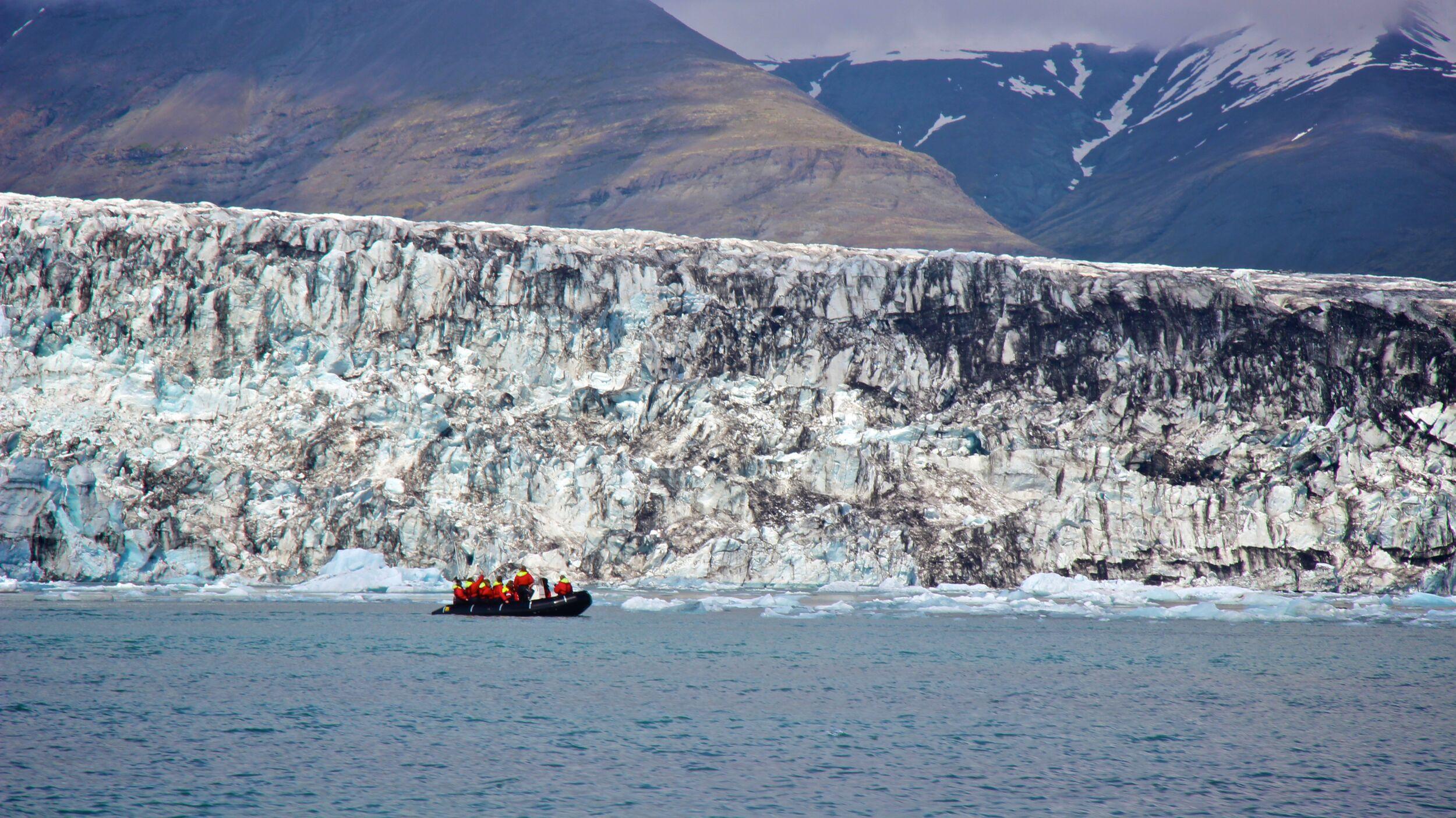
Boat Tours
As winter's grasp loosens and spring emerges, from April to October, the glacier lagoon thaws, setting the stage for boat tours. Glide smoothly across the lagoon, where floating icebergs drift lazily by, and the reflections of the surrounding glaciers shimmer on the water's surface. It's a surreal experience, reserved for those few months when the lagoon isn't draped in its icy mantle. Both activities offer a unique way to truly immerse oneself in the raw beauty of Iceland's natural wonders.
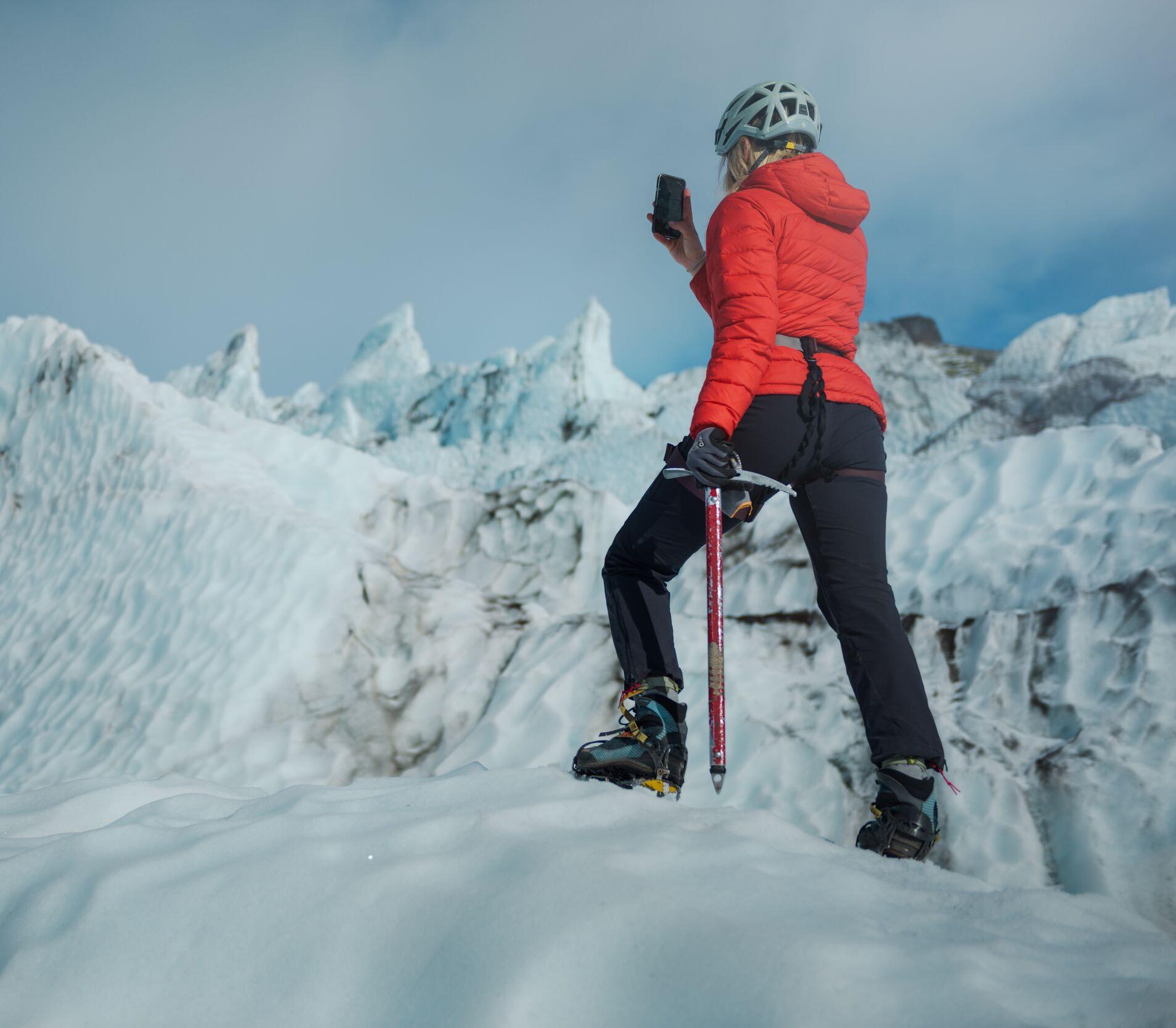
Skaftafell: an outdoor wonderland
The outdoor activity wonderland of Skaftafell isn’t far away from the Diamond Beach – it is about a 45-minute drive. Keen walkers can hit the miles of hiking trails at Skaftafell, to Svartifoss waterfall or the viewpoint over Skaftafellsjökull glacier. Skaftafell is also a popular spot to embark on a guided glacier hike and you can even explore the natural ice caves of Vatnajökull glacier under the guidance of a professional with all the essential safety equipment included.
Plan your visit at Diamond Beach
Given the distance from Reykjavík, many visitors to Diamond Beach and Jökulsárlón opt to stay overnight in the area. While the distance can be covered in one day, it would require a journey of 13-14 hours with minimal stops. If you're keen on a glacier hike, wish to explore Skaftafell, or simply want to spend more time in the region, plan for at least two days for this adventure.
All About Diamond Beach
If you’re in a hurry, you can spend as little as 45 minutes at the Diamond Beach, strolling along the sand and snapping a few photos of the ice orbs along the shore. However, most people like to spend between one and two hours here, walking along the beach and spotting wildlife along the way. If you are combining your visit to the Diamond Beach with a boat tour at Jökulsárlón, you’ll want to allow for half a day at least.
From the carpark at Jökulsárlón, it is a very short walk to the Diamond Beach. It only takes a couple of minutes to cross the road and reach the black sand of the beach. Of course, you can stroll along the sand here to stretch your legs after the long drive and how long you walk is really up to you.
In terms of light and spectacle, the best time to visit the Diamond Beach is at sunrise or sunset when the ice on the shore is cast in a golden hue. This is quite a difficult feat in summer when the sun never really sets below the horizon and the semi-twilight hours near midnight are as close to the “golden hour” as you will get. In winter, there’s the bonus of a late sunrise, so you can hit the beach in the morning without having to get up alarmingly early. During the months of the long shadows (late February to April and late September to early November), the sun stays low in the sky, making it feel as though the country is in a constant state of sunset. During these months of sepia tones and long shadows, you can visit the Diamond Beach any time of day to capture the glorious “golden hour”.
Not only is the Diamond Beach itself a photographer’s dream, but it is also right next to Jökulsárlón glacier lagoon which is one of Iceland’s biggest highlights. This is the only place in Iceland where you can see glowing blue icebergs floating in a glacial lagoon, so making the long journey from Reykjavik to see both is definitely worth it. There are also myriad natural wonders along the south coast to stop at along the way – tumbling waterfalls, glaciers and black-sand beaches.
There is no cave on the Diamond Beach. If you want to see a beach cave, a stop at Reynisfjara black-sanded beach along the south shore is essential. Here you’ll find Hálsanefshellir cave which is formed by twisting columns of basalt. There is also the Blue Diamond Ice cave, but that is not on Diamond Beach either. You’ll find the Blue Diamond Cave on a glacier walk on the Skeiðarárjökull glacier, in the Skaftafell area.
Away from the light pollution of the city, the Diamond Beach is a great place to hunt for the northern lights. Just remember to bring a head torch or source of light to help you navigate from the carpark to the sand – it really is dark out here at night. When the conditions are right and the northern lights do make an appearance, there is something spellbinding about watching the green lights twist and turn like a wave above the sea, reflected in the water and ice on the beach.
In terms of crowds, the middle of the day and afternoon are usually the most popular times to visit the Diamond Beach. If you are staying overnight nearby and want to avoid the crowds, it's best to visit at the beginning of the day or later in the evening. However, even in the peak of the day when most visitors arrive, there's plenty of space for everyone. This is especially true considering the vastness of the lagoon, which spans an impressive 18 km² (6.9 sq mi). The same holds for Diamond Beach; you can stroll along the shore for kilometres, and often, you'll discover even more ice pieces and icebergs the further you venture. So, there's no need to be concerned about feeling crowded.
The Diamond Beach is on Iceland’s south coast, on the east side of the island. It sits just off the Route One main road so is easy to navigate to from Reykjavík. You’ll find it just across the road from Jökulsárlón glacier lagoon.
The wind whipping off the North Atlantic is usually cold. The Diamond Beach is quite exposed, so layering up is a good idea. You’ll want a decent windbreaker coat (waterproof in case it rains or snows), sturdy walking boots, and a layer like a knitted jumper or fleece to keep you warm. In winter, a woolly hat, thick gloves and a scarf are essential on the beach as it gets really cold in Iceland.
A lot of Iceland’s beaches have black sand, but what makes the Diamond Beach special is the crystal-clear shards of ice that litter the inky shore. Ice washes down from Jökulsárlón glacier lagoon and rests on the beach before it is picked up by the wild waves of the North Atlantic Ocean and taken away. Seeing the sparkling orbs of ice against the black sand, especially when they catch the light at sunset, is a truly special experience.
As it is a public space, there is no fee to visit the Diamond Beach. In fact, the carpark for Jökulsárlón glacier lagoon and the Diamond beach is free to use as well. The only thing you might want to pay for is something to eat from the cafe at Jökulsárlón visitor’s centre or a boat tour out onto the glacier lake.
Swimming is not permitted at the Diamond Beach. The abundance of ice on the shore might offer a clue to the temperature of the water – it is freezing here, so hypothermia is a risk. The south shore of Iceland is also known for its wild and restless sea, with powerful waves and weather conditions that can change with little or no warning. So, although the Diamond Beach is not prone to the sneaker waves that pull people out to sea like at Reynisfjara beach, swimming here is still not allowed or advised.
Volcanic activity in the area created the black sand at the Diamond Beach. Over thousands of years, this part of the island has seen dramatic eruptions from the volcano system that simmers beneath the island’s biggest ice cap. During volcanic eruptions, molten lava flowed down from the mountains and met the cold North Atlantic Ocean where it was cooled and solidified into black rock. Often, this sudden cooling causes the lava to shatter into tiny fragments, so it becomes black volcanic sand.
By road, it is around 380 kilometres (236 miles) from Reykjavík to the Diamond Beach, so the drive takes around five hours. From Reykjavík, you simply follow the Route One ring road along the south coast until you reach the sign for Jökulsárlón and the beach. Or, instead of driving yourself, join an organised tour with a professional driver and guide and just sit back and enjoy the view.
Related tours
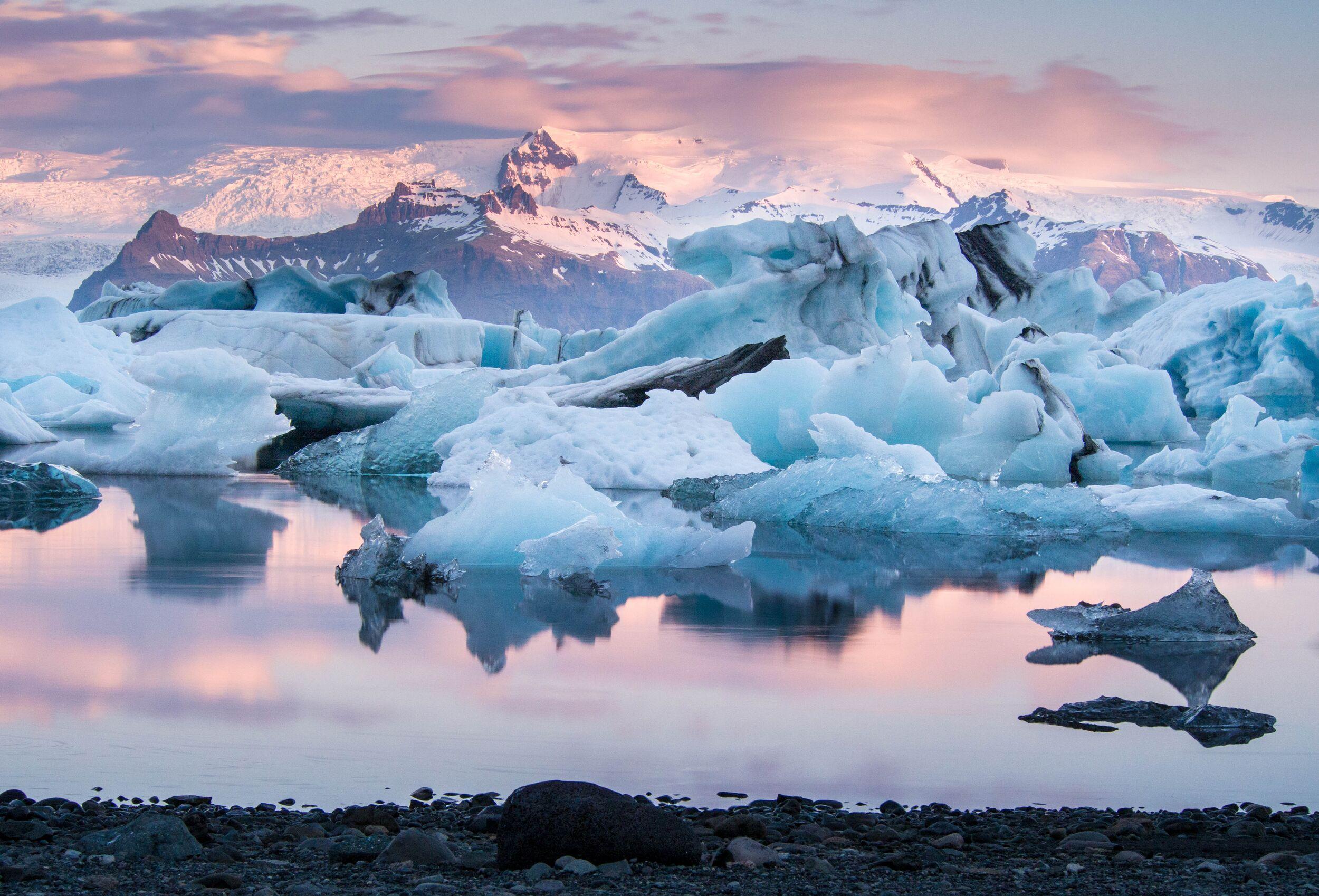
Jökulsárlón Glacial Lagoon & Boat Tour
With its enormous white and blue icebergs breaking off from Vatnajökull glacier, the Jökulsárlón Glacier Lagoon is a natural wonder of Iceland, a sight you absolutely cannot miss. This scenic day tour includes a thrilling boat ride on Jökulsárlón Glacier Lagoon, the epic waterfalls of Skógafoss and Seljalandsfoss, the glittering Diamond Beach and charming Vík. Explore some of south Iceland’s most spectacular and iconic landscapes!
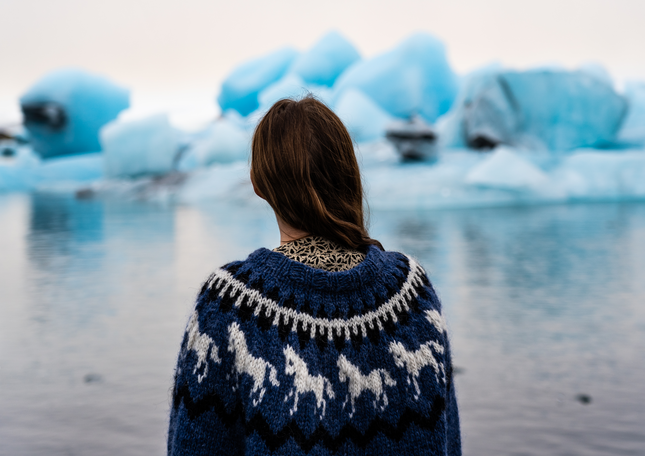
Jökulsárlón Glacial Lagoon & Diamond Beach
With its enormous white and blue icebergs breaking off from Vatnajökull glacier, the Jökulsárlón Glacier Lagoon is a natural wonder of Iceland, a sight you absolutely cannot miss. The nearby Diamond Beach has a stunning display of chunks of ice glistening on stark black sands. This tour features some of southeast Iceland's most spectacular and iconic landscapes!


